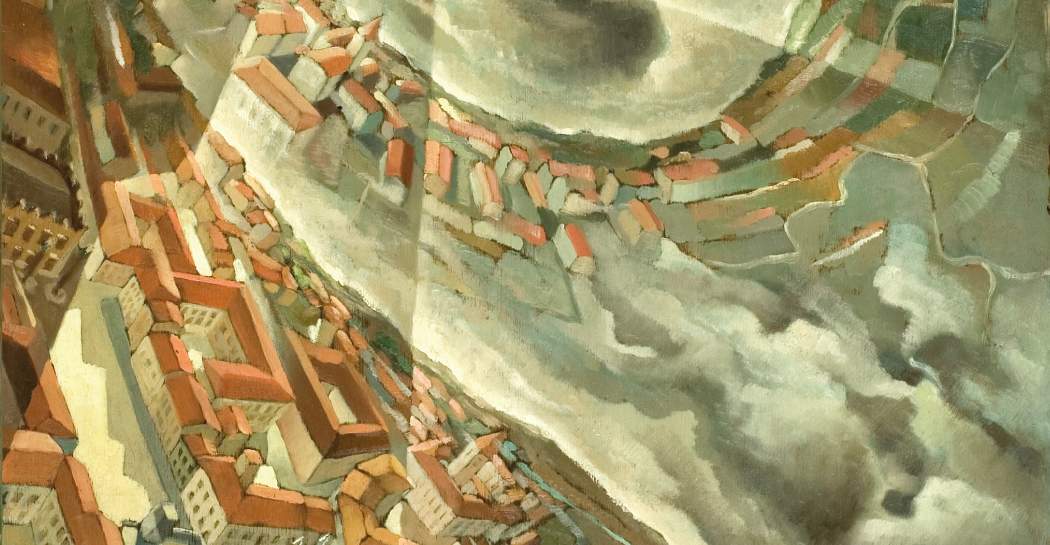On view until Oct. 28 is the exhibition "Rome the Modern City. From Nathan to Sixty-Eight. " Set up at the Galleria d’Arte Moderna in Rome, the exhibition showcases more than 180 works created in the 1900s with the Eternal City as the main protagonist.
In addition to the many important artists already on display, two new works will be added as of July 2018: Giulio Turcato with one of his greatest masterpieces, Comizio (1950), an exemplary work to best describe the radical stylistic, cultural, social as well as political changes toward which the Capital was heading at the turn of the 1940s. And Marino Marini with Bagnante (1934), a striking work in peperino stone donated by the artist directly to the Governorate of Rome in 1935.
Thanks to the collaboration with the Centro Sperimentale di Cinematografia - Cineteca Nazionale, the exhibition is also enriched by a specific section dedicated to the artist’s films of the 1960s, made by the major artists who worked in Rome, reinventing the language of cinema for artistic purposes: Franco Angeli, Gianfranco Baruchello, Mario Schifano and Luca Maria Patella.
On view from July 2018 and throughout the exhibition period will be: MARIO SCHIFANO - Ferreri (n.d.), Photographer (n.d.), Reflex (1964), Vietnam (1967), Film (1967), Souvenir (1967); GIANFRANCO BARUCHELLO - Didn’t Happen (1968); LUCA MARIA PATELLA - Animated Earth (1967), SKMP2 (1968); FRANCO ANGELI - [News] (1967), Screens (1968), New York (1969).
In addition, encounters in the exhibition, evenings of art and culture, and the Sunday opera are the three titles of the events that began on Wednesday, June 6, and will run alongside the exhibition until Oct. 26.
The nine encounters include a guided tour of the exhibition at 4 p.m. followed by presentations, readings, and screenings (in the exhibition hall on the 1st floor) with multi-voice talks by scholars in the field ranging from art to literature, from history to music of the decades covered in the exhibition.
The evenings of art and culture, in collaboration with Istituto Luce-Cinecittà, take place in the Gallery’s cloister/garden from 7 to 9:30 p.m. examining themes related to the artistic, cultural and social evolution of Rome between the 1910s and the 1968s, with the presence of scholars from various fields. Three dates are scheduled, with film screenings, readingsand lectures: Sept. 28, Oct. 2 and Oct. 5.
The Sunday opera starts on June 10 through October 28 for a total of ten Sunday appointments all at 11 a.m. These are guided tours through which the public is invited to identify an alternative point of view to the exhibition route through the analysis of an iconic work, between confirmations and rediscoveries.
The exhibition, curated by Claudio Crescentini, Federica Pirani, Gloria Raimondi and Daniela Vasta, is promoted by Roma Capitale, Assessorato alla Crescita culturale - Sovrintendenza Capitolina ai Beni Culturali. Organization Zètema Progetto Cultura.
The events were made possible thanks to the collaboration with Accademia di Belle Arti di Roma, Centro Sperimentale di Cinematografia - Cineteca Nazionale and Istituto Luce-Cinecittà. The Film d’artista exhibition was also organized thanks to the collaboration with Archivio Franco Angeli, Archivio Mario Schifano, Fondazione Baruchello and Luca Maria Patella.
Meetings in the exhibition: free guided tours and meetings with paid admission to the exhibition.L’opera della domenica: free guided tours with paid admission to the exhibition. Evenings of Art and Culture: Free admission. During the events it will not be possible to visit the exhibition.
Hours: daily 9 a.m.-7 p.m. For all information you can visit www.museiincomune.it and www.galleriaartemodernaroma.it.
 |
| How great artists painted Rome: the exhibition Rome the Modern City. From Nathan to Sixty-Eight |
Warning: the translation into English of the original Italian article was created using automatic tools. We undertake to review all articles, but we do not guarantee the total absence of inaccuracies in the translation due to the program. You can find the original by clicking on the ITA button. If you find any mistake,please contact us.